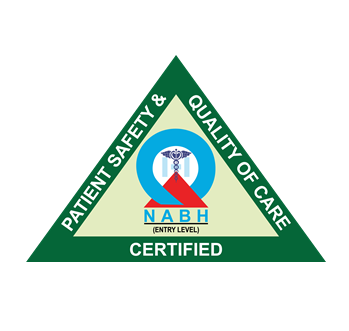
Knowing About Breast Cancer Symptoms, Diagnosis, and Treatment Options
Breast cancer occurs in women across the globe, and it is one of the most common types of cancer. Forming a lump or tumor signifies the abnormal and excessive growth of breast cells. Cancer can be a frightening diagnosis, but early awareness of the signs, the diagnosis process, and the treatment methods available can significantly improve the outcomes.
Understanding Symptoms
Breast cancer is often associated with a breast lump. Since this is not the only reason to be concerned, the following symptoms of breast cancer should be taken into consideration:
- Skin changes such as dimpling, puckering, and even redness.
- Change in shape and size of the breast, plus it’s appearance
- Change to the breast and nipple area that does not go away. This can include thickened lumps as well as soreness.
- Nipple discharge that is itchy, and can even be blood-stained.
- Unexplained soreness in the breast area.
Every single change to the human body can be misdiagnosed as symptoms of a disease. One sign does not confirm a breast cancer diagnosis. Regular check-ups are essential to one’s health. Self-checks and advanced screenings enable early diagnosis and treatment.
Determinants that Advance the Onset of Breast Cancer
These are important factors that can make the likelihood of breast cancer higher:
- Age – the risk of breast cancer becomes higher with age, specifically after the age of 50.
- Family history – having close relatives with breast cancer and ovarian cancer can increase risk.
- Genetic mutations – alterations in the BRCA1 and BRCA2 are associated with a higher risk.
- Hormonal factors – early menstruation, delayed menopause, and long-term hormone replacement therapy can increase risk.
- Lifestyle – Obesity, lack of exercise, and an increase in the consumption of alcohol along with smoking can raise risk.
Some of the causes can be avoided, however adopting a healthy lifestyle and seeking routine medical examinations can lower the risk and improve chances of detection at the earliest possible stages.
Steps of Breast Cancer Testing
Upon suspecting a patient with breast cancer after a screening, a clinician will order tests needed to confirm the diagnosis. The most common procedures are:
- Clinical breast examination – the practitioner checks the patient for lumps and any changes.
- Mammogram – breast X-ray screening for any possible suspicious changes.
- Ultrasound – uses sound waves to confirm lumps are either solid or fluid.
- Biopsy – the process of extracting a small tissue sample from a breast it diagnosed with a cancer to evaluate the tissue microscopically; considered the most definitive test.
- MRI scan – occasionally used for further evaluation in cases of greater complexity, particularly with dense breast tissue.
Diagnosis not only confirms the presence of cancer, but also assists in determining the stage of the disease, including evaluating the size of the tumour, and whether it has metastasized to nearby lymph nodes, other distant body parts, or structures.
Grasping the Different Stages of Breast Cancer
Breast cancer is classified into Stages 0, which is non-invasive, to Stage IV, which is the most advanced stage of cancer with metastasis. The stage of cancer affects the management plan and prognosis. Managing early-stage cancer is associated with better survival rates and in most cases requires less aggressive management intervention.
Management Options for Breast Cancer
Management is personalised according to the patient and in consideration of the disease stage, type of cancer, and the patient’s general health. Commonly applicable options are:
- Surgery – aimed toward excising the cancerous tissue which can be classified into lumpectomy and mastectomy where the whole breast is excised.
- Radiotherapy – application of radiation to cancerous tissues with the intent of destroying the remaining cancer cells post-surgery.
- Chemotherapy – administration of potent cytotoxic drugs to the patient to kill or stop the growth of cancerous tissue, given pre or post surgery.
- Hormone therapy – applicable for cancers with positive hormone receptors, whereby blocking the hormone essential for cancer growth will be used.
- Targeted therapy – the use of drugs that act on specific attributes of the cancer cells.
- Immunotherapy – using the body’s immune system to fight the cancer in specific cases.
- Other factors also affect the selection of treatment options, such as personal choices, profiles of the side effects, and whether one is concerned with fertility preservation.
The Role of Early Diagnosis
The survival rates of patients with breast cancer are significantly higher if their condition is detected early. Screening tests such as mammography make it possible to identify cancer even in the absence of symptoms. Women over the age of 40 are advised to get their breasts screened routinely, but women with a higher risk can benefit from earlier and more frequent checkups.
Self-awareness is equally crucial. With the right diagnosis, changes need to be acted upon quickly. A trusted healthcare facility in Bangalore, such as East Point Hospital in Avalahalli, enables prompt treatment.
Life After Breast Cancer
Having breast cancer and undergoing treatment presents one with physical and emotional challenges. The treatment process is made easier with the support of family and friends, along with healthcare teams.
East Point Hospital in Avalihalli, Bangalore, provides counseling, rehabilitative services and support groups to assist in the emotional processing of cancer and many individuals have the opportunity to lead healthy, productive lives post-treatment.
Frequently Asked Questions
Q1 What signs of breast cancer should I primarily look out for?
A newly formed lump or thickened area in the breast or underarm change in the dimensions of the breast, skin dimpling over the breast, changes to the nipple with or without discharge. Any of these symptoms warrant medical assessment.
Q2 What methods confirm diagnosis of breast cancer after preliminary tests?
A biopsy is the most reliable approach. It involves excising a small piece of breast tissue and microscopically analyzing it for the presence of malignant cells for diagnosis confirmation.

